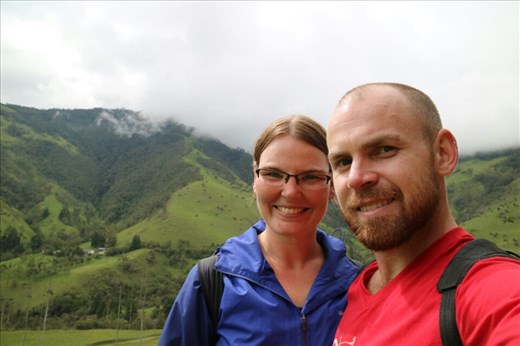After having had everything done for us over the past few months on our tour through South America it was time to start fending for ourselves again. We wanted to cross the border into Colombia but didn't want to spend the US $ 70 each for the direct bus. I found some information online about a cheaper more complicated way that would cost us less than half but I was a bit skeptical as we have been lead astray by some dodgy info from the net before. We decided to go for it anyway, although, if we had known that we would both wake up with massive hangovers that morning from our goodbye drinks we may have opted for the more expensive, direct bus. The day ran like clockwork surprisingly and after a taxi, a bus, another taxi, a border crossing and a collectivo we arrived in Ipiales, just over the Columbian border.
We had a couple of hours stop in Ipiales. The town itself was nothing special but the Santurio de las Lajas, a castle-like church perched on a cliff out of town, was spectacular. We caught another bus from Ipiales to Pasto where we stayed the night at the Koala Inn. Really nice accommodation and really friendly staff and a good chance to catch up with our old tour group who was also staying there, even though it had only been one day since we saw them last. It was also good to see we weren't the only ones to wake up with hangovers that day.
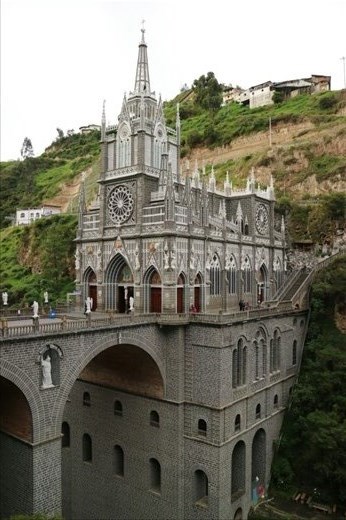
The following morning we headed out to Laguna de la Cocha in a collectivo. Collectivos are great, they are pretty much just a white van that drive on select routes. They are really cheap but only good if you don't have a strict schedule. There are no set times. They leave when they are full and they can stop anywhere at anytime for drop offs or pick ups. The small tourist town next to the laguna is built along canals leading to a massive lake. A local took us out in his boat to an island where we did a rainy bush walk through the forest. Upon our return to the town we enjoyed a lunch of freshly caught trout for only COP6000 ( aud $3 ).
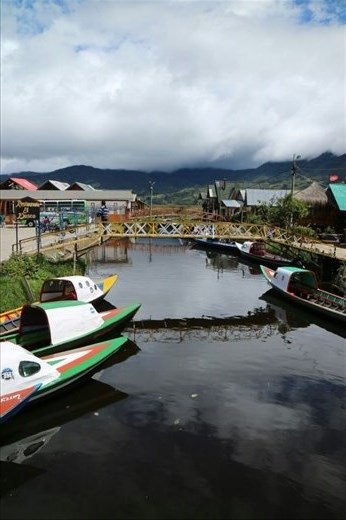
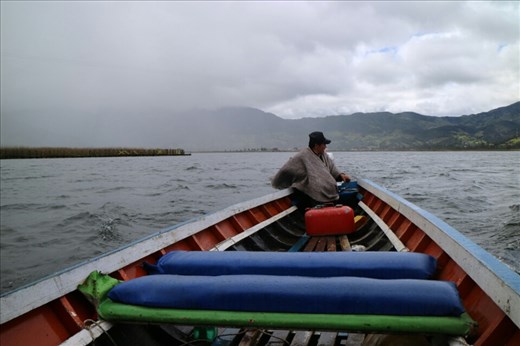
Back in Pasto we learnt that the main highway north was closed because of protests following the death of an indigenous person so we were forced to stay another night instead of continuing on to Popayan as planned.
The next day we tried again to catch the bus north, but still couldn't get through so decided instead to go west to San Agustin. The gravel road, that was for the most part only wide enough for one car, wound through the mountains the whole way. We had steep rock walls on our left with numerous, "beware rockslides" signs, and sheer cliffs on our right. We were squished in the backseat surrounded by people throwing up in plastic bags and had a couple of near misses as our driver was flying around blind corners with cars coming the opposite way. We had recently cycled down Death Road but this was by far the scariest road that we had ever been on. Amazingly we made it to San Agustin in one piece.
In San Agustin we stayed at the El Jardin hostel in town, which was simple but nice. San Agustin has a rich archealogical history with many stone statues found at burial sites over a thousand years old. We explored these as well as some nearby waterfalls with a jeep tour.


Our next stop was the Desierto de la Tatacoa, where we stayed overnight at Tranquilidad Posada (satisfactory). We explored the red and grey parts of the desert on bicycle. Apart from being scorching hot the hostel only had a kid's bike left for me to ride. With no gears and no brakes it made for an extreme workout with the constant up and down of the desert roads. Lucky the beers were cheap and cold back at the hostel. While it was beautiful, it was quite small, very hot and out of the way, so I'm not sure whether it was worth the trip. The stars were very clear though and we did meet a really nice Colombian family in the jeep on the way who wanted to practice their English with us (we have certainly had a lot more local interaction since leaving the tour and cause to practice our limited Spanish).
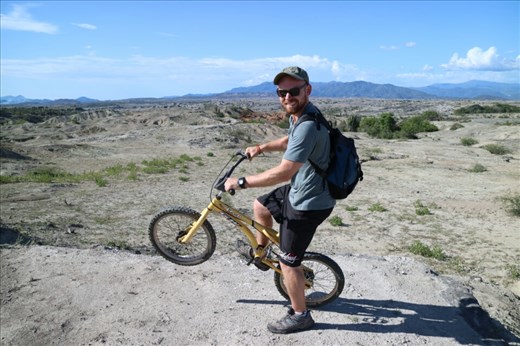

Another day's drive took us to Salento, one of my favorite places in South America. Salento is a pretty small town surrounded by rolling green hills. It was a lovely place to chill for a few days after having had a pretty hectic schedule while on the tour. Our hostel had a well stocked kitchen so it was a good chance to satisfy our vegetable cravings after a lot of cheap meals on the go. We spent the first day exploring the Valle de Cocora with its towering wax palm trees and hidden hummingbird sanctuary. It was a beautiful hike with rewarding views the whole way. The second day we walked outdide of town to the Don Elias coffee plantation for a tour to learn about the coffee making process. Karen was very happy that it came with an included tasting. We hiked a different way home in search of a waterfall, although we didn't find the waterfall the walk through the more rural areas was very interesting. 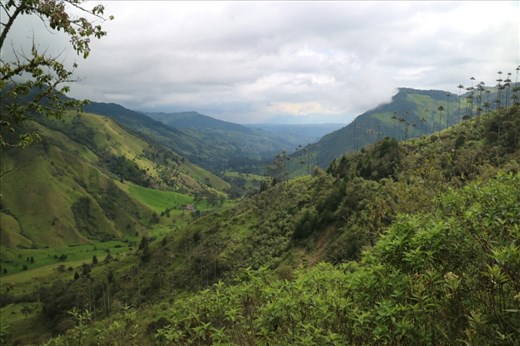
We took the bus to Bogota to catch our flight. Although it looked close in distance on the map, it was actually an 8 hour drive. In Bogota we attempted to walk up to Cerro de Monserrate, a look out over the city but the army men guarding it told us it was closed because of, according to my limited Spanish, unstable ground. So we instead spent the morning wandering through the old streets, getting amazing Colombian coffee, checking out the street art and getting one last almurzo lunch ($10 000 cop/ AUD $4) for a three course meal. There was no urgency to rush around seeing things as we had been there before.
In the afternoon we tool a short flight to Cartagena, where the heart and humidity hit us like a hammer the moment we got off the plane! We could overlook the heat however, because of the sheer beauty of the old Spanish port city. We stayed in Getsamani, part of the old town, at the Marlin Hotel, which was not bad but could have used AC. The district was good, with lots of cheap restaurants and pubs, of which our favorites were Gato Negro, Getsamani Cafe Bar and the pizza places around Plaza Trinidad. The real drawcard of Cartagena was the old town, a historical walled city filled with beautiful houses and squares from the 16th and 17th century. We spent many hours wandering the cobbled streets, photographing the balconies with their flowing bougainvillea plants, and having Aguila beers on the wall as we watched the sun set over the Caribbean Sea. At just alittle over $1 per beer, why wouldn't you? It felt like a setting straight out of a pirate movie. The Castillo de San Felipe de Barajas fortress built by the Spanish in the 1600s was impressive but pricy by Colombian standards at COP $25000 (AUD $12). We also spent half a day on the Bocagrande Beach where we spent most of our time fending off hawkers of drinks, massages, beach toys, jewellery, ice cream etc. How relaxing!
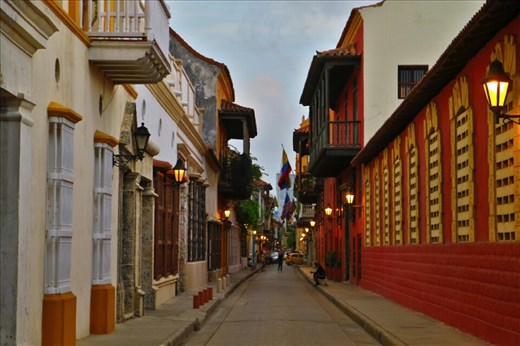
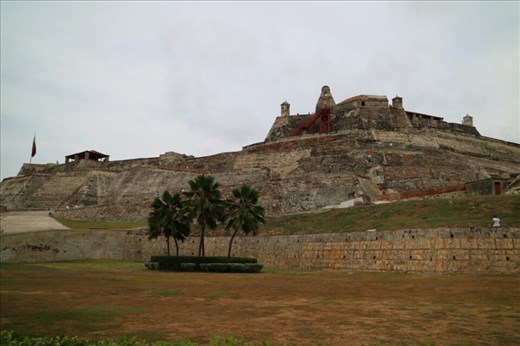
In our experience, Colombia deserves is reputation as an up and coming tourist destination. It's diverse, interesting, breathtakingly beautiful, the people are welcoming and the price is right. I'm sure if you scratch too far underneath the surface you could find the seedy undertones left as a legacy of being a country run by drug lords for too long, but the touristy path is a lovely place to be.
